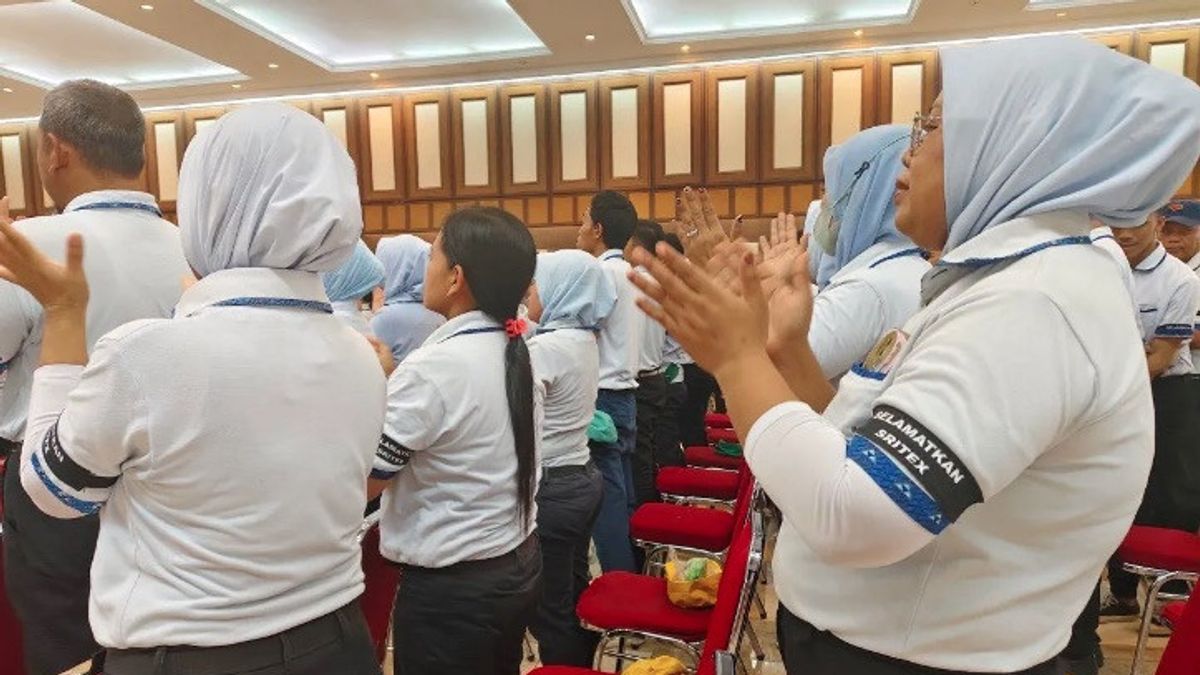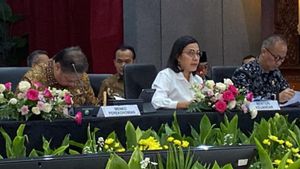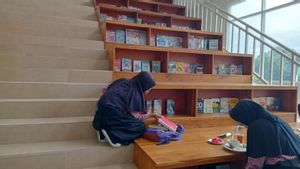JAKARTA The bankruptcy of the giant textile company Sri Rejeki Isman or Sritex occurred because of the demand for textiles that slowed down, according to economists. For this reason, the government is expected to be able to save the Sritex textile and textile production industry (TPT) has a major impact on Indonesia's economy and labor.
Sritex's bankruptcy decision has become a public spotlight because it involves many parties and a large number of workers. The bankruptcy that occurred in Sritex made the government move to deploy four ministries, namely the Ministry of Industry, the Ministry of Finance, the Ministry of SOEs, and the Ministry of Manpower.
"President Prabowo has ordered the Ministry of Industry, the Ministry of Finance, the Minister of SOEs, and the Minister of Manpower to immediately review several options and schemes to save Sritex," said Industry Minister Agus Gumiwang Kartasasmita in a written statement.
Meanwhile, the Ministry of Industry (Kemenperin) will prepare several rescue options for Sritex from bankruptcy conditions. Acting Director General of Chemical, Pharmaceutical and Textile Industries (IKTF) Reni Yanita said that these rescue proposals must be discussed again with Sritex and also three other relevant ministries, namely the Ministry of Finance, the Ministry of SOEs, and the Ministry of Manpower.
"We have a more detailed follow-up meeting on the proposed schemes to the government, in this case, maybe to the Ministry of Finance. Because there are four ministers, right, now to compile that we also have to consolidate," said Reni at the Ministry of Industry Office.
Director of the Digital Center of Economic and Law Studies (Celios) Nailul Huda does not deny that the textile industry, including the legendary Sritex company, has had considerable pressure in recent years. The global demand condition, such as the United States and China, has decreased which has ultimately slowed demand for the textile industry.
Even when the US condition has improved, according to Huda, it still cannot raise demand for textiles higher. China's demand slows down which causes oversupply in China's domestic.
"On the other hand, the pressure on imported products is very much felt, especially after the Ministry of Trade (Kementan) issued a regulation that relaxed the rules and import requirements," said Huda when contacted by VOI.
"Moreover, domestic demand has slowed down and they prefer imported products because the price is cheaper. So there is pressure from within the country, from abroad it is also strong. So there is no doubt the textile industry and textile production or TPT have fallen," he added.
In line with Huda, economist and Jakarta Veterans UPN Public Policy Expert Achmad Nur Hidayat revealed, Sritex bankruptcy is not solely due to the company's internal problems. Sritex's bankruptcy reflects the difficulties faced by the garment industry as a whole in Indonesia.
SEE ALSO:
"Sritex's bankruptcy is the culmination of the longstanding problem of lurking. With a large debt burden, dependence on global demand, and pressure from the increase in the minimum wage, Sritex is finally no longer able to survive," said Achmad.
In recent years, Achmad has seen the Indonesian garment industry under pressure. That is still coupled with a high dependence on export markets and global supply chains disrupted by various external factors, including trade wars between the United States and China as well as rising domestic production costs.
"Thousands of workers who have lost their jobs not only affect their purchasing power, but will also affect social stability in industrial areas that rely heavily on the existence of large textile companies," he said.
According to Achmad, the weakening of the textile industry in the country is also a serious problem because it can exacerbate gender inequality in the workforce and has the potential to increase women's poverty.
"With the majority of female workers in the garment sector plus job loss on a large scale like this, then this is an issue that needs to be faced seriously," explained Achmad.
According to the Central Java Statistics Agency (BPS), the number of workers in the textile sector reached 94,732 people in 2020. This is equivalent to five percent of the total workers in Central Java. You could say, the company, which is located in Sukoharjo, Central Java, is the backbone of the local economy.
As of 2023, BPS noted that GRDP (Gross Regional Domestic Product) Sukoharjo was IDR 46.52 trillion. This figure is 8.74 percent higher than 2022.
Quoting Kompas, currently Sritex has a total of 50,000 employees in the Sritex group. Then there are 14,112 employees who will be directly affected by the company's bankruptcy decision.
"Currently, there are around 14,112 SRIL employees who are directly affected, 50,000 employees in the Sritex Group, and countless other small and medium enterprises whose business continuity depends on Sritex's business activities," the company said in a statement.
Nailul Huda said, apart from Sritex, many other TPT sector companies have also laid off layoffs and not a few have gone out of business. This means that this condition is already severe and the government seems to have run out of ideas to provide stimulus to the TPT industry.
"In fact, the contribution of the TPT industry to the national industry is quite large. The portion of the TPT industry to GDP is able to reach 5.8 percent. In terms of employment, it is quite large with the basis of the most workers in Central Java. The number of workers in the TPT sector is more than 3.5 million workers," he added.
If Sritex lays off 50,000 of its employees, this will greatly affect the economy in Sukoharjo and Central Java because the number of workforces in Sukoharjo Regency in 2023 is 499,743 people and in Central Java it is 21.07 million people.
For this reason, said Huda, it is important for the Prabowo government to be able to stop the negative rate of the textile industry. He also encouraged regulations that loosen imports to be disciplined to provide incentives for the local TPT industry, as well as evaluate import duties for TPT products so as not to cause longer turmoil.
"Sritex rescue, and other textile industries are highly expected because of the large contribution of the TPT industry to Indonesia's economy and labor," explained Huda.
"Moreover, Sritex has up to 30 thousand workers. Sritex's bankruptcy has not only affected the textile industry, but has a multiplier to other sectors. The regional economy is also very threatened with a considerable decline, such as Sukoharjo and other textile center areas," he concluded.
The English, Chinese, Japanese, Arabic, and French versions are automatically generated by the AI. So there may still be inaccuracies in translating, please always see Indonesian as our main language. (system supported by DigitalSiber.id)














